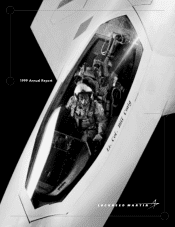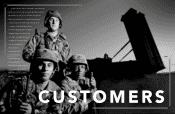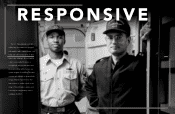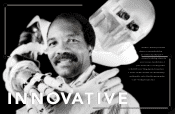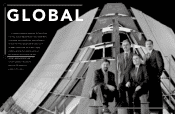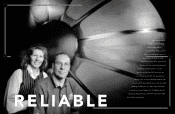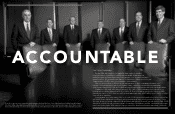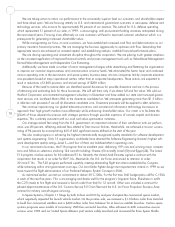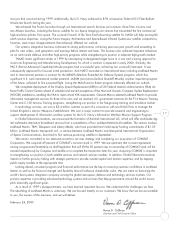Lockheed Martin 1999 Annual Report Download - page 9
Download and view the complete annual report
Please find page 9 of the 1999 Lockheed Martin annual report below. You can navigate through the pages in the report by either clicking on the pages listed below, or by using the keyword search tool below to find specific information within the annual report.
ACCOUNTABLE
ACCOUNTABLE
From left to right: John V. Sponyoe,
Lockheed Martin Global Telecommunications Chief Executive Officer;
Robert J. Stevens,
Lockheed Martin Executive Vice President–Finance and Chief Financial
Officer;
Vance D. Coffman, Lockheed Martin Chairman and Chief Executive Officer; Robert B. Coutts,
Executive Vice President, Lockheed Martin Systems Integration;
Michael F. Camardo,
Executive Vice
President, Lockheed Martin Technology Services;
Dain M. Hancock,
Executive Vice President, Lockheed Martin Aeronautics Co.;
Albert E. Smith,
Executive Vice President, Lockheed Martin Space Systems Co.
Dear Fellow Shareholder:
The year 1999 was a tumultuous one marked by sharp contrasts. In a number
of important respects, we experienced a difficult and unacceptably disappointing year,
marked by program and financial performance issues primarily in our aeronautics and space
systems businesses. We are acutely aware that you, our shareholders, suffered a loss for the year
of approximately one half the value of your investment in Lockheed Martin.
While we experienced serious difficulties in some important areas, in others our program performance consis-
tently met or exceeded expectations and we won a number of major competitions. In a particularly encouraging sign,
orders increased 8 percent over 1998 and our backlog increased slightly, reversing a two-year trend of declining backlog.
Compared to 1998 results, sales declined 3 percent to $25.5 billion. Diluted earnings per share adjusted for non-
recurring and unusual items dropped from $2.99 in 1998 to $1.50 in 1999, and we were forced to reduce our 2000
financial outlook twice in 1999. While free cash flow was disappointingly lower at $873 million versus 1998’s $1.6 billion,
it was well above expectations.
Several program issues had a negative effect on our results: C-130J cost growth along with mission failures involving Titan
and THAAD (Theater High-Altitude Area Defense) and increased advanced launch vehicle investment for the Atlas V. On the
other hand, by year end we had completed C-130J development and delivered 30 aircraft, Titan had returned to flight, THAAD
achieved two successful intercepts and is proceeding to its next phase of development, and Atlas V development was progress-
ing in a more structured plan. While many more steps are required, the direction in performance improvement is noteworthy.
14 15

